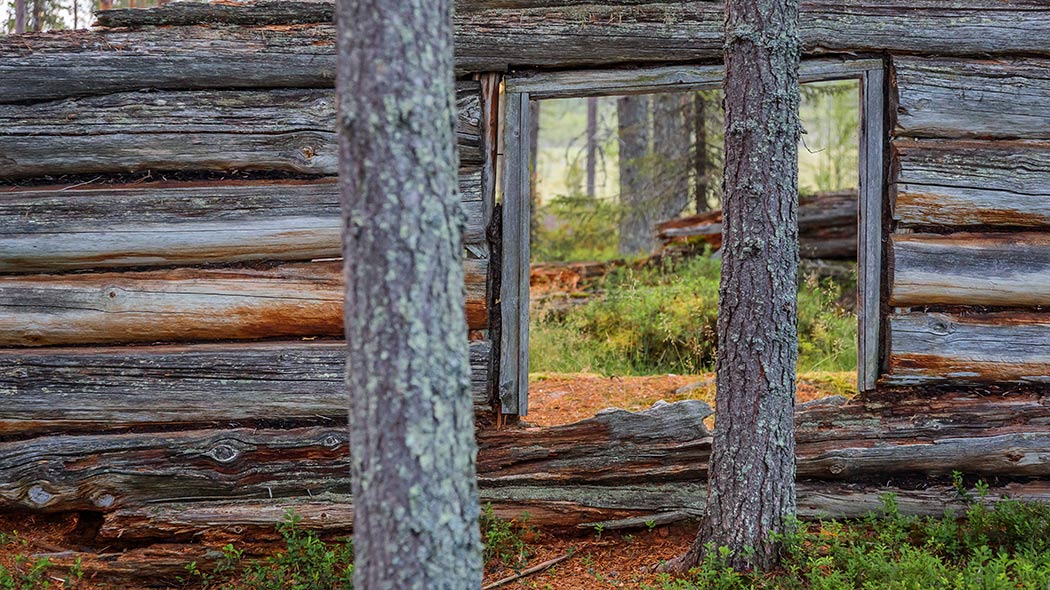Sights in Pyhä-Luosto National Park

Isokuru Gorge
Isokuru Gorge is located between the Kultakero and Ukonhattu fell tops and is Finland's deepest gorge at 220 metres deep. A trail with duckboards at the bottom of the gorge leads to Lake Pyhänkasteenlampi and to the Pyhänkasteenputous Waterfall. The formation and geology of Isokuru gorge are featured on information boards along the trail. Kindly notice that Isokuru gorge is a restricted area and visitors must stay on the marked summer trail at all times. That is for visitor safety and protecting the unique nature in the gorge. There is no winter trail to the gorge due to avalanche danger.
Lake Pyhänkasteenlampi, Pyhänkasteenputous Waterfall and Uhriharju Ridge

At the back of Isokuru Gorge in the centre of steep cliff walls is the 12 m deep Lake Pyhänkasteenlampi. A stream flowing down through Karhukuru Gorge flows into the lake and forms a 17 m high shower-like waterfall the Pyhäkaste Waterfall. The names for the area's magnificent sights come tell of beginnings of Christianity and the old beliefs of the Forest Sámi (Pyhänkasteenlampi = Holy Baptism lake, Uhriharju = sacrifice ridge and Noitatunturi = witch fell). Deer and their antlers were sacrificed on Uhriharju Ridge in hope of a successful hunt. An old Sámi place of worship a seita was transferred into a Christian place of worship when a minister Esaias Fellman performed a group christening at Lake Pyhäkasteenlampi for the area's Sámi in the summer of 1648.
Noitatunturi Fell
The highest peak of the Pyhä-Luosto fell chain is Noitatunturi Fell which rises to 540 m. Hikers who brave the demanding route to the top are rewarded with magnificent views of the surrounding area. Hikers following the Noitatunturi Trail will also pass Lake Annikinlampi which is deep within Kuorinkikuru Gorge up on a fell slope. The view towards the north is gorgeous! Noitatunturi Fell was previously called Seitatunturi, as it was an old Sámi place of worship.

Loggers Cabin Ruins and Reindeer Fence
The ruins of the old loggers cabin by Poronpolku Trail tells the story of the area's old logging tradition. Logging took place at Pyhätunturi at the change of the 19th and 20th centuries. There are still signs of logging, such as tree stumps and winter roads. Commercial forestry was practiced in the area until the National Park was established there in 1938. At the reindeer fences the Pyhä-Kallio Herders' Association has reindeer round-ups at the end of the year. During the round-ups reindeer are checked for their brands and those young which have yet to be branded have it done at this time. Reindeer which are to be slaughtered as also marked.

Amethyst at Lampivaara Fell
Quartz is the most common mineral in the earth's crust after feldspar. Amethyst a rare violet coloured see-through form of quartz has been found at Lampivaara fell in Luosto. The clearest parts of the amethyst found at Lampivaara are classified as a gem and is often used in jewellery. Gathering amethyst gems from the National Park is forbidden except from the Amethyst Mine. The Lampivaari Amethyst Mine (amethystmine.fi) is a sectioned off area within Pyhä-Luosto National Park and is one of the only jewel mines in the world where visitors are permitted.

Ukko-Luosto Fell
The grand Ukko-Luosto Fell rises from the area's fell chain to a height of 514 metres. After having climbed the 670 steps which have been carved into the cliff-side hikers reach the top of the fell and can experience the high winds there and view the magnificent scenery of the surrounding aapa bogs and hills as well as the old-growth forests of which some of the trees are 400-years-old.
Old-growth Forests at Ukko-Luosto
The forests at Ukko-Luosto Fell and on the southwest side of Lampivaara have not been touched by forestry and some of the trees there are 400-years-old. Luosto is known for example for its grand old pine forests.

Rykimäkero Storage Holds
In olden times hunters stored their catch and other equipment such as clothing and animal furs in traditional food storage rooms which were built atop a strong pole or tree stump to keep them safe from predators. These were built by hunting grounds far from settlements. Especially during winter these storage places were used for storing catches and equipment up until they could be taken to the village. There is also a traditional Lappish wooden storehouse in the area.

Rykimäkuru Gorge
Rykimäkuru Gorge is an impressive tear in the rock bed or a gorge. This gorge is different from the area's other gorges as it formed in a tear in the Earth's crust while the other gorges were formed by water from melted ice during the Ice Age.

